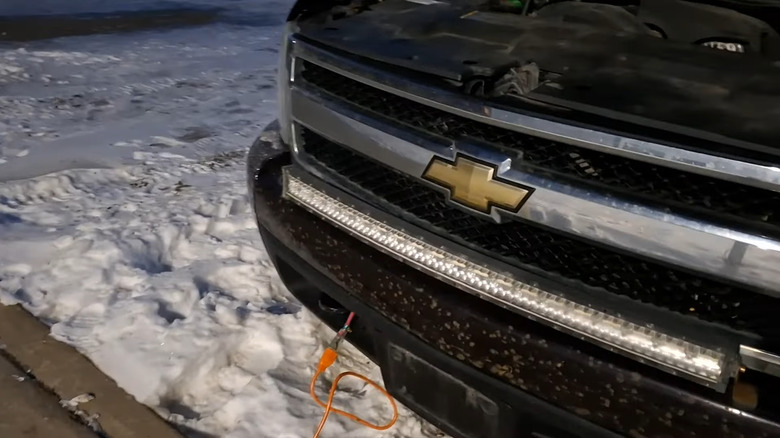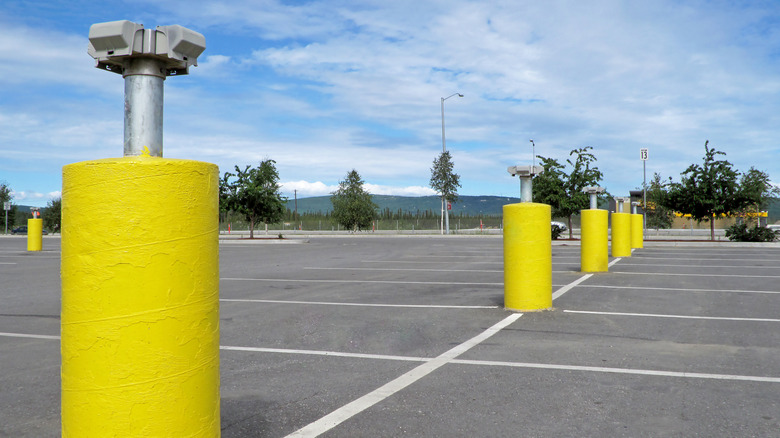Why Do Some Cars In Alaska Have Electrical Plugs?
By today's standards, it's not unusual to see a car with an electrical socket on it. Whether it's a hybrid vehicle or powered wholly by electricity, those kinds of sockets would be used to provide energy to the car in much the same way as you'd pump gas into one. However, what if you saw a car with the opposite situation? That is, rather than an outlet for receiving electricity, it has an extendable cord ending with prongs, not unlike the rolling cord you'd find in a vacuum cleaner. Strange as it may sound, this is a semi-common occurrence in the state of Alaska.
In theory, such a plug would serve the same purpose, receiving electricity from an external source. If that were the case, though, why would these plugs be present on cars with traditional combustion engines? As it turns out, these electrical plugs have nothing to do with powering the car. Rather, they're part of a specialized effort to preserve a car's functionality in the bitter Alaskan cold by subtly heating the engine and battery.
Some Alaskan cars have heaters to protect the engine and battery
You might not know if you don't live in Alaska, but it is really cold up there. Even in the summer, temperatures still hover around 40 to 60 degrees Fahrenheit. In the winter, things can get all the way down to -30 degrees Fahrenheit, and that lasts from November to March. It should go without saying that that kind of extreme weather isn't good for a car. Low temperatures cause the oil in the engine pan to become thick and viscous, which makes it far harder for the engine to turn over. The cold can also impact your battery, preventing the transfer of electricity, which is also necessary to start the car.
Just leaving your car out in these temperatures for the length of a grocery run, to say nothing of leaving it overnight, could end with you completely stranded. It's for this reason that some cars sold in Alaska have frontal plugs. It's also why, back in the mid-2010s, the state installed standing electrical outlets in parking lots and on residential streets, which cars can then plug into. Plugging a car into one of these outlets powers up a discrete block heater in the hood, which helps keep both the battery and oil pan at an even temperature. This way, when it's time to take a drive, your car's engine and battery are already at ideal operating temperature, ready to turn over as soon as you turn the ignition.

